
Ceramium is a genus of Ceramium algae. It is a large genus with at least 15 species in the British Isles.

Atractophora hypnoides is a rare red alga (Rhodophyta) found in the British Isles, France and some Atlantic Islands and is the only species of the genus found in the British Isles. It is attached to the rock or other algae by a small basal disc and is much branched with downgrowing filaments which enclose the main branch or axis forming a cortex. Short filaments of limited growth radiate in whorls from the axis and frequently convert into hairs. The spreading filaments grow irregularly in a diffuse manner. Microscope examination is required for identification.
Polysiphonia atlantica is a small filamentous species of red marine algae Rhodophyta. The thalli form small tufts up to 3 cm long. The axes are ecorticate consisting of axial cells surrounded by four periaxial cells.
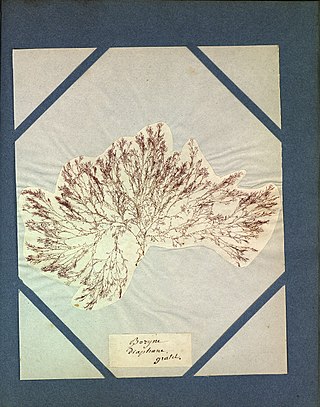
Ceramium diaphanum is a species of marine red algae.

Nemalion helminthoides is a small marine alga in the division Rhodophyta.
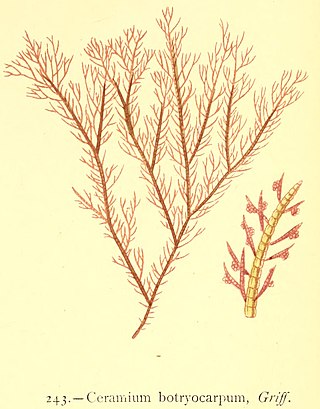
Ceramium botryocarpum is a small red marine alga in the Division Rhodophyta.

Ceramium echionotum is a small marine alga in the division Rhodophyta.
Ceramium flaccidum is a small red marine alga in the Division Rhodophyta.

Ceramium ciliatum is a small marine red alga in the Division Rhodophyta.
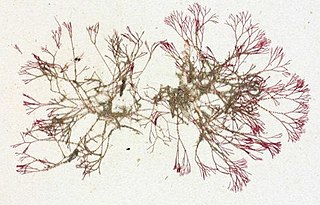
Ceramium cimbricum is a small red alga in the division Rhodophyta.
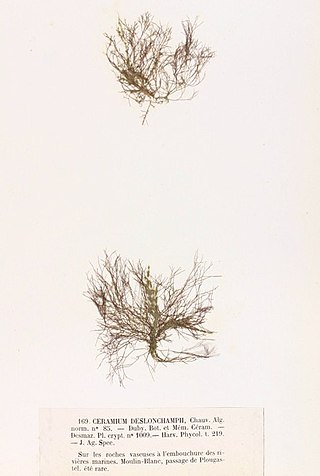
Ceramium deslongchampsii is a small marine red alga in the Division Rhodophyta.
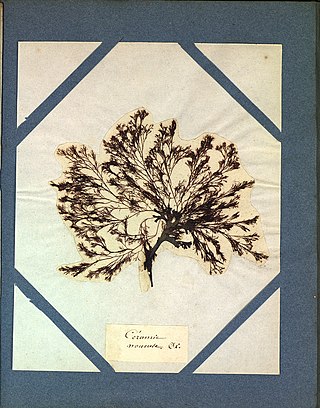
Ceramium nodulosum is a small red marine alga. There is confusion surrounding this name.
Ceramium pallidum is a small marine alga. It occurs in waters off of Europe and Africa (Morocco).
Ceramium secundatum is a small marine red alga.

Ceramium shuttleworthianum is a small marine red alga.
The taxon Ceramium siliquosum is a small marine alga. It belongs to the red algae genus Ceramium.
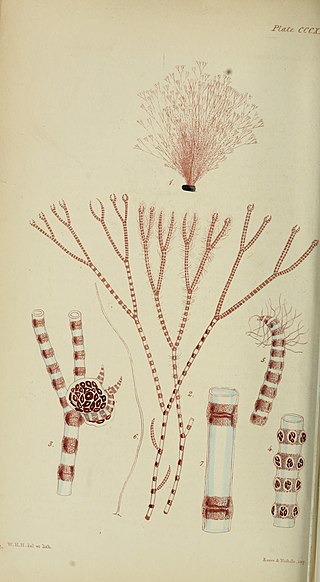
Ceramium strictum is a small marine red alga.
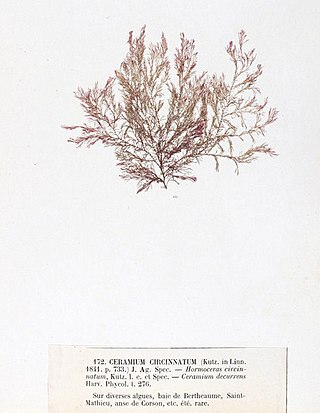
Ceramium circinatum is a small marine red algae.

Ceramium virgatum, or the red hornweed, is a small red marine alga.

Membranoptera alata is a small red alga in the Rhodophyta.













